Fluorocarbon fishing line has been around for a long time in saltwater fishing, mostly used as leader material for line shy fish. As the manufacturing process improved, the major line companies started introducing fluorocarbon lines for freshwater fishing applications.
Competitive anglers, especially in the walleye and bass fishing world, quickly discovered that the best fluorocarbon line choices had some big time advantages over the standard monofilament they’d been using for decades. This article explores why and when to use fluoro, and which lines I have determined are the best for bass fishing or any type of fishing.
5 Top Fluorocarbon Lines
- Seaguar Red Label – Best for the Money. Performs well, easy on the wallet.
- Sunline Super FC Sniper – Smooth casting, premium fluorocarbon.
- Seaguar InvizX – When invisibility is a must.
- Trilene 100% Fluorocarbon – Great all around fluorocarbon
- Seaguar AbrazX – Toughest fluorocarbon for fishing nasty cover.
There is a boatload of fluorocarbon fishing lines on the market these days. It seems like every year manufacturers are one upping each other with more exotic and more specialized lines. The good news is you can ignore the marketing hype, and keep your approach much simpler than that.
Nobody has the time to try them all, but I’ve tested a bunch. I’ve settled on these as my best fluorocarbon line for bass fishing and all other types of fishing I do. I like them because they work well, are reliable, and most stores will have at least one of them if you are in a pinch.
1. Seaguar Red Label – Best Value
Seaguar Red Label is perhaps the best fluorocarbon line for all-around everyday fishing. It’s a workhorse line. Sure, there are more premium lines that are a little softer, or maybe a little tougher, but you’ll pay far more for it.
Why pay more when the reliable Red Label can be used for nearly any bass fishing application? I fish it through some gnarly brush and rock on my home lake and it holds up well. Castability is also good; I can launch a 3/8oz swim jig a mile with it.
Perhaps best of all is it is widely available in stores, even the local Wal-Marts, and the price is hard to beat. For less than $20 I can spool up 15lb line on 2 baitcasting reels. I typically use 15lb for fishing jigs, plastics, and Carolina rigs. I step down to 12lb for shaky heads and also on all my crankbait setups.
2. Sunline Super FC Sniper – Smoothest with Least Memory
Sunline Sniper is a premium fluorocarbon line at a nonpremium price. It’s slightly more expensive than Seaguar Red Label but comes in 200yd spools rather than 150 yards. That makes it easy to back my reels with equal sized monofilament line to get 2 baitcasters loaded with 100 yards of Sniper.
Super FC Sniper is smooth, supposedly thanks to three coatings of resin. It must work because it simply feels better when you spool it up. The other thing I really love about this line is how little line memory it has. After a few weeks sitting in my rod locker, a few sprays of line conditioner freshens it right up like new with little coiling effect.
One other benefit of Sniper is the size selection. Red Label goes from 10, 12, 15, 17, 20lb test, while Sniper has 10, 12, 14, 16, and 20lb. Sometimes 17 and 15 lb are a little heavy, and 16 and 14 lb can come in handy for those situations.
3. Seaguar InvizX- Low Memory Fluoro
InvizX by Seaguar is a step up from Red Label or Sniper and is a super popular . It feels softer in comparison to Red Label and has pretty low on a .
For a spinning reel, you’re going to deal with the same issues that you have with any other fluorocarbon. Just make sure you don’t overfill your spool, and you shouldn’t have much trouble.
The 17lb test InvizX is awesome for flipping jigs and creature baits into shallow grass and wood. 12lb is perfect for your crankbait rods, and the 8lb is what I typically use for drop shot fishing. The castability is what I like the most about this line.
4. Trilene 100% Fluorocarbon
Berkley Trilene 100% Fluorocarbon is another excellent line to try out. Many professional bass anglers use it exclusively, and they don’t settle for anything less than great.
I will use 10lb and up on baitcasting reels, and 8 or less on spinning reels. Be sure to not overfill your spool with this fluorocarbon, as it has a little bit of memory that can cause the line to jump off the spool.
The durability and casting of this line are excellent. You can use it around laydowns and rocks without worrying about abrasion. Just check the last few feet of line every few casts and you’ll see how tough it is.
The other nice feature is having the choice between clear and green line. I can’t think of another fluorocarbon that has that option. Green fluorocarbon is great in water with a little color to it.
5. Seaguar AbrazX – Toughest Fluorocarbon
AbrazX is the tougher relative of InvizX. Where InvizX is known for crystal clear performance underwater, AbrazX is known for extra tough resistance to knicks and abrasions from fishing the worst possible cover.
For that extra toughness, you get a stiffer line as a tradeoff. But if you’re fishing jigs and plastics in heavier rock piles or brush piles, that is a good trade to know your line will hold up.
AbrazX is pricey, but it’s a very good line for the heavy cover style of fishing. I like to use it when dragging football jigs on rocky points and ledges. It’s also outstanding for fishing crankbaits through brush and wood.
Why Use Fluorocarbon
Fluorocarbon is great for a lot of fishing techniques, and for bass and walleye fishing thanks to its invisibility and toughness. Let’s look in depth at the properties of fluorocarbon that make it such a versatile fishing line, and why you need it in your tackle box.
- Nearly Invisible to Fish – The molecular makeup of fluorocarbon gives the line a refractive index very near that of water. All that means is it passes light nearly as well as water and doesn’t distort or block light. This quality makes fluorocarbon excellent for finesse fishing like shaky heads, drop shots, and wacky rigs. You should also get more bites from line shy fish in clear bodies of water.
- More Sensitive than Mono – Most anglers think fluorocarbon line doesn’t stretch as much as monofilament. The fact is fluoro stretches more than mono but at a much higher force. This phenomenon can be attributed to the high density of the lines molecules, which provides higher sensitivity and a perceived lower stretch.
- High Line Density – The technical name for fluorocarbon is PVDF, a dense polymer compound. This density causes the strands to have more weight than mono or braid of equal diameters. A denser line makes it easier to cast further and the line also sinks in water. The sinking ability makes it good for bottom lure presentations like jigs and plastics and also aids in getting crankbaits down to their optimal diving depth.
- Abrasion Resistant – The high density of PVDF molecules also means fluorocarbon lines are excellent at resisting abrasion due to contact with rocks, wood, and other objects. I’ve found my brush pile fishing to be far more effective with fluorocarbon than with other lines. I get the benefit of invisibility and the toughness to survive the snaggy brush.
- High Knot Strength – Given the high density, , and of this type of , it makes perfect sense that would have excellent . The key is to avoid weakening the with heat from the friction of forming the knot. Good technique and lubrication minimize any degradation of the .
When to Use Fluorocarbon
- As a Leader Line – Fluorocarbon excels at being used as a leader line for both spinning and casting applications. Many pros and weekend anglers alike have adopter the practice of spooling their reels with braid and attaching a 3-10ft leader. You gain the strength, durability, and castability of braid, with the invisibility of a fluorocarbon leader. Learn to tie good connection knots and go fish. This is a real game changer once you have confidence in it.
- More: Best braid for main lines.
- Fishing in Cover – A fluorocarbon mainline is a great choice when tackling heavy cover and big fish. No, it is not as tough as braid, but a 17-20lb fluoro line is stout enough to take the abuse of being flipped, dragged, and punched through heavy vegetation, wood, rock, and boat docks.
- Clear Water – When the water clarity gets above 3-4ft, the transparent nature of the line becomes an advantage over braid and mono. Drop shotting down to skittish smallmouth is also more effective with invisible 6-8lb fluorocarbon. Spooky post-spawn fish can be caught using a light line and long casts.
- Not for Topwater – Since fluorocarbon sinks, that makes it a poor choice for topwater lures like poppers, spooks, and buzzbaits. Weightless plastic presentations such as the Senko and Fluke are in a grey area. You can use fluorocarbon for them, but know that it will increase your sink rate and you might not get the action you want. I like mono for Fluke fishing because I can keep the Fluke dancing on the top more easily to draw strikes.
Tips for Using Fluoro
There are a few drawbacks to using fluorocarbon fishing lines. Namely, the line management and shock strength of fluorocarbon fishing line can be a challenge to anglers just getting started with it.
The best thing is to stop being afraid of it and pick one of the above lines. Try it for a few trips on different rods with different lures to get used to it, and adapt as you see fit. To help you get started, here are my best tips for using fluorocarbon line.
1. Tie Proper Knots
Tying a quality knot is super important to having success with fluorocarbon. I tie a Palomar knot for all my direct knots to lures and hooks, and either an FG knot or Blood knots for tieing on fluorocarbon leaders to braid. The key is to practice these knots until you can tie them efficiently, and then building confidence by getting out and catching fish on them
- When you double your line through the eye, make sure they are parallel and don’t cross.
- When you pass the loop through the half knot, don’t tighten just yet. Pull the loop back over the hook and hold it in your fingers with the tag end. Slowly pull it tight until it gets close.
- Make sure you moisten the knot as you pull it tight. You should have a smooth cinching feel as you pull it tight.
- You should have minimal curly cues on the tag end, and no abrasions on the mainline.
2. Choose the Correct Line Size
I’ve found the biggest problem in casting with fluorocarbon is having mismatched line size with the rod and lure weight. 15lb fluoro line on a MH casting rod is going to have some trouble with a 1/4oz jig. Likewise, an 1/8oz shaky head isn’t going to cast optimally with 12lb line on a MH rod. Here are some general guidelines for which size line to use for different techniques. Your personal preference may vary from mine.
- 20lb Fluoro – Pitching, Flipping, larger Swimbaits. Weights: 3/8oz – 1oz.
- 15lb Fluoro – Pitching, Flipping, Carolina Rig, Texas Rig, Spinnerbait. Weights: 5/16oz – 1/2oz.
- 12lb Fluoro – Texas Rig, Crankbaits, Shaky Head, Senko. Weights: 3/16oz – 3/8oz.
- 10lb Fluoro – Shaky Head, Wacky Rig, Split Shot, Crankbaits. Weights: 1/8oz – 5/16oz.
- 6-8lb Fluoro – Finesse Shaky Head, Jig Worm, Drop Shot. Weights: 1/16oz -3/16oz.
3. Use Line Conditioner
Using a line conditioner like KVD Line and Lure is going to make your life with fluoro much easier, especially with spinning reels. A few sprays per spool each day will tame a lot of the backlashing and wind knots you might otherwise get. I spray my reels the night before I’m fishing and it has made a huge difference in line management.
Last updated 2024-04-19 at 18:02 / Affiliate Links & Images from Amazon Product Advertising API

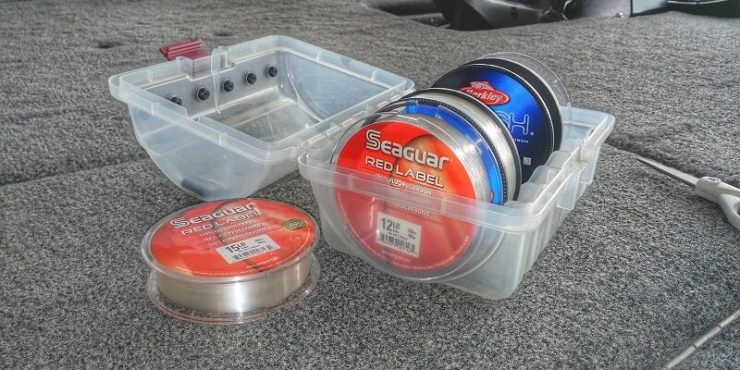


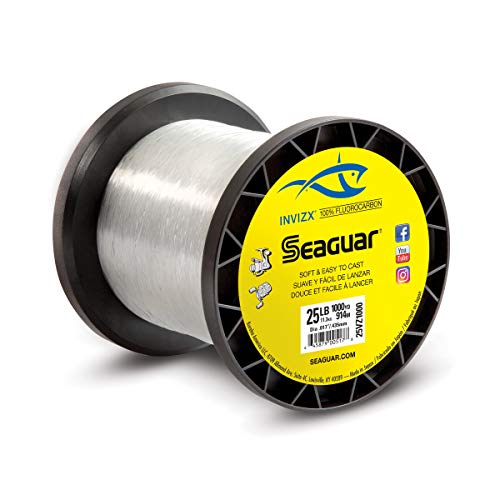



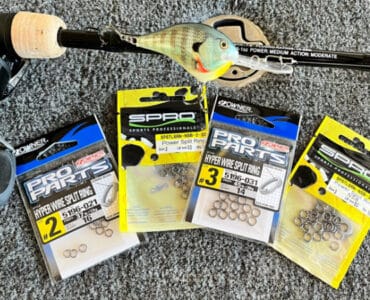
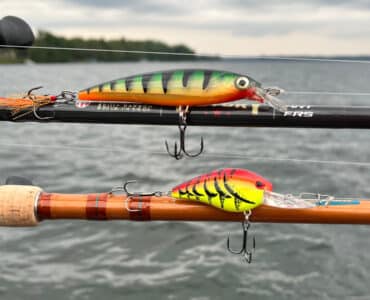
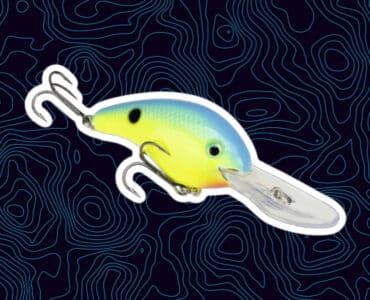
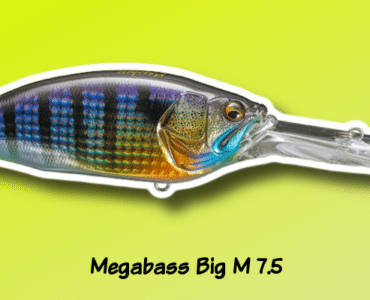








Great vid. It helps to put a glass bead above the knot so when the weight slides down its not pushing itself onto the knot. It also will give it a little click to help attract fish.
Good tip Carl. Just like on a C-rig. I haven’t had any problems with Eco Pro tungsten weights damaging my knot, but the bead trick will be good to try sometime.
When is it best to combine Braid and fluorocarbon lines as a leader? When is it best to use only fluorocarbon line?
Generally, you should use flouro as a leader on spinning gear, anytime you want the advantages that fluoro has over braid. Invisibility, abrasion resistance, sinks, etc. You can use a really nice flouro line that way and not have to use up the entire expensive spool. Usually, flourocarbon only works best on baitcasting reels, they handle the memory much better.
i am torn on what line to use between sunline super FC sniper or seaguar Abrazx, plus what size to use, i fish spinning reels, and in Nova Scotia, Canada, i fish around a lot of rocks and lay down, the most styles i fish is wacky rig 5″ senko’s, carolina rig, the weight size is from 3/16 to 1/2 oz,
what would you recommend for fishing spinner baits and buzz baits, i been fishing braid 30lb test but the price of that in Canada is gone through the roof, i fish 3/4 oz and smaller
I would avoid using AbrazX on a spinning reel unless as a leader, FC Sniper would be a better choice. I would not use anything more than 10lb for Wacky Rigs and Senkos. The memory will be bad on a spinning reel. I would use 20-30lb braid mainline and use 10-20ft leaders of your favorite fluorocarbon to avoid birds nest backlashes.
I’m planning on using a medium spinning combo for 1/4oz shakey head and weightless – 3/16 oz texas rigs. I WAS planning to go with 8lb line, would you recommend bumping it up to 10lb?
A medium spinning combo might struggle with 10lb fluoro unless used as a leader. It also depends on the type of cover you are fishing around. You’ll break 8lb easily around brush and rocks.
1/4oz seems like a heavy jig for a Med spinning combo…I fish a 1/4oz shaky head on 12lb fluoro on a 6-6MH baitcaster.
I’m wondering how you have all these line weights and line types available on one fishing trip. Do you have extra spools for each reel with different lines? Otherwise you’d have to have about fifteen rods and reels on the boat.
You don’t need them all, just 2 or 3 that work for how you fish. I use 8, 12, and 15lb fluoro for 80% of my fishing. 8lb leaders to braid on spinning reels, 12 on crankbaits, 15 on just about everything else.